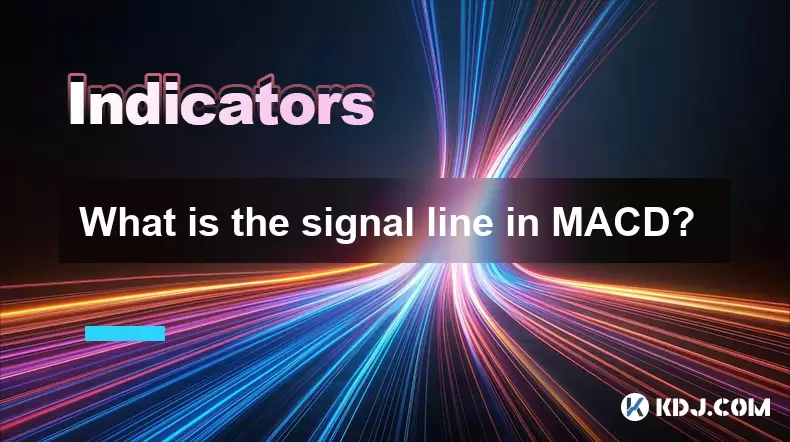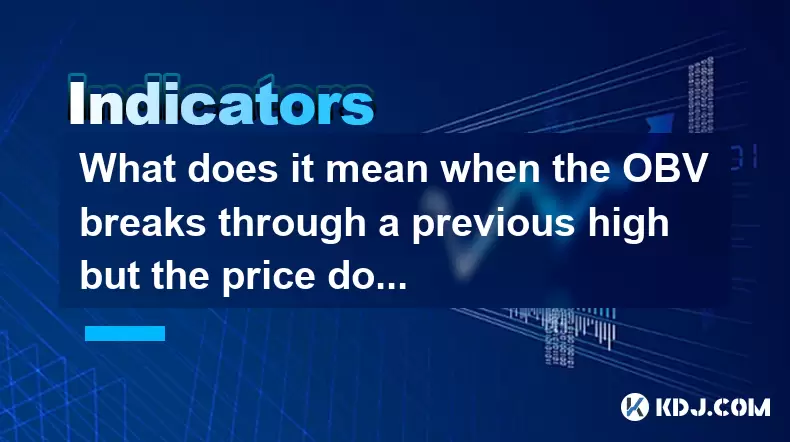-
 Bitcoin
Bitcoin $116700
0.24% -
 Ethereum
Ethereum $3973
4.34% -
 XRP
XRP $3.283
7.68% -
 Tether USDt
Tether USDt $1.000
0.01% -
 BNB
BNB $789.8
2.27% -
 Solana
Solana $176.2
3.31% -
 USDC
USDC $0.9999
0.00% -
 Dogecoin
Dogecoin $0.2238
5.14% -
 TRON
TRON $0.3389
-0.51% -
 Cardano
Cardano $0.7907
4.03% -
 Stellar
Stellar $0.4527
10.02% -
 Hyperliquid
Hyperliquid $41.07
4.27% -
 Sui
Sui $3.794
1.77% -
 Chainlink
Chainlink $19.49
10.40% -
 Bitcoin Cash
Bitcoin Cash $580.9
0.74% -
 Hedera
Hedera $0.2617
4.32% -
 Avalanche
Avalanche $23.41
3.67% -
 Ethena USDe
Ethena USDe $1.001
-0.03% -
 Litecoin
Litecoin $122.4
1.38% -
 Toncoin
Toncoin $3.364
1.49% -
 UNUS SED LEO
UNUS SED LEO $8.988
0.37% -
 Shiba Inu
Shiba Inu $0.00001295
2.82% -
 Uniswap
Uniswap $10.62
5.75% -
 Polkadot
Polkadot $3.922
4.46% -
 Dai
Dai $1.000
0.01% -
 Bitget Token
Bitget Token $4.494
2.15% -
 Monero
Monero $268.0
-1.30% -
 Cronos
Cronos $0.1523
3.68% -
 Pepe
Pepe $0.00001127
4.43% -
 Aave
Aave $285.4
4.85%
What is the signal line in MACD?
The MACD signal line, a 9-period EMA of the MACD line, helps confirm trend direction and generate buy/sell signals in crypto trading.
Aug 08, 2025 at 08:08 pm

Understanding the MACD Indicator Structure
The MACD (Moving Average Convergence Divergence) is a widely used technical analysis tool in the cryptocurrency trading space. It helps traders identify potential trend reversals, momentum shifts, and entry or exit points. The indicator consists of three main components: the MACD line, the signal line, and the histogram. Each component plays a distinct role in interpreting market dynamics. The signal line is particularly critical because it acts as a trigger for buy and sell signals when it interacts with the MACD line.
The MACD line is calculated by subtracting the 26-period Exponential Moving Average (EMA) from the 12-period EMA of an asset’s price. This line reflects the short-term momentum compared to the longer-term trend. The signal line, however, is derived from this MACD line and serves as a smoothed version of it.
Definition and Calculation of the Signal Line
The signal line is a 9-period EMA of the MACD line itself. This means it takes the values of the MACD line over the past nine intervals—whether minutes, hours, or days—and applies an exponential moving average to them. The purpose of this smoothing is to reduce noise and provide a clearer indication of momentum direction.
To calculate the signal line, follow these steps:
- Compute the 12-period EMA of the cryptocurrency’s closing price.
- Compute the 26-period EMA of the same closing price.
- Subtract the 26-period EMA from the 12-period EMA to get the MACD line.
- Take the resulting MACD line values over the last 9 periods.
- Apply a 9-period EMA to those MACD line values to generate the signal line.
This process ensures the signal line lags slightly behind the MACD line, making it ideal for confirming trends rather than leading them. The lag helps filter out false signals caused by short-term price volatility common in crypto markets.
Role of the Signal Line in Generating Trading Signals
The primary function of the signal line is to act as a dynamic benchmark against which the MACD line is compared. When the MACD line crosses above the signal line, it generates a bullish signal, suggesting upward momentum is building. Conversely, when the MACD line crosses below the signal line, it produces a bearish signal, indicating increasing downward pressure.
These crossovers are among the most watched events in technical trading. For example, in Bitcoin trading, a MACD line crossing above the signal line during a consolidation phase may suggest the start of a new uptrend. Traders often use this as a cue to enter long positions. The opposite crossover may prompt traders to close longs or initiate short positions.
It’s important to note that while these signals are powerful, they are not infallible. In highly volatile cryptocurrency markets, false signals can occur due to sudden news events or whale movements. Therefore, many traders combine the MACD signal line crossovers with other indicators like RSI or volume analysis to improve accuracy.
Visual Interpretation Using the Histogram
The histogram in the MACD indicator visually represents the distance between the MACD line and the signal line. When the MACD line is above the signal line, the histogram bars appear above the zero line and are typically colored green. When the MACD line is below the signal line, the bars drop below zero and are often red.
The height of the histogram bars reflects the strength of the momentum. Increasing bar height indicates widening separation between the two lines, signaling strengthening momentum. Shrinking bars suggest convergence, which may foreshadow a potential crossover.
For instance, if the green bars on the histogram start to shorten, it implies that bullish momentum is weakening, even if the MACD line remains above the signal line. This could warn traders of an impending bearish crossover. Similarly, red bars getting smaller may indicate bearish momentum fading, possibly preceding a bullish reversal.
Practical Application in Cryptocurrency Trading Platforms
Most cryptocurrency trading platforms such as Binance, TradingView, and KuCoin include the MACD indicator with default settings (12, 26, 9). To apply it:
- Open the chart of the desired cryptocurrency pair (e.g., BTC/USDT).
- Click on the “Indicators” button and search for “MACD”.
- Select the MACD indicator, and the platform will automatically plot the MACD line, signal line, and histogram.
- Observe how the MACD line interacts with the signal line over time.
- Enable alerts for crossovers if the platform supports it.
Adjusting the parameters is possible. Some traders use shorter periods (e.g., 5, 13, 6) for faster signals in day trading, while others stick to defaults for swing trading. However, changing settings increases sensitivity and may lead to more false signals in erratic crypto price movements.
Common Misinterpretations and How to Avoid Them
A frequent mistake is treating every signal line crossover as a guaranteed trade opportunity. In ranging or sideways markets, the MACD can produce multiple false crossovers. For example, during a period of low volatility in Ethereum, the MACD line may cross the signal line several times without a sustained trend forming.
To avoid this:
- Confirm signals with price action, such as breakout patterns or support/resistance levels.
- Use volume indicators to validate momentum—rising volume during a crossover adds credibility.
- Apply the MACD on multiple timeframes; a crossover on both the 4-hour and daily charts carries more weight.
- Avoid trading crossovers in choppy markets unless confirmed by additional confluence factors.
Another error is ignoring divergence. If the price makes a new high but the MACD line fails to surpass its previous high while staying below the signal line, it indicates weakening momentum—even without a crossover.
Frequently Asked Questions
Can the signal line be used alone for trading decisions?
No, the signal line should not be used in isolation. While it provides valuable momentum cues, relying solely on it increases the risk of false signals. It works best when combined with price analysis, volume data, and other technical tools.
What does it mean when the signal line flattens?
A flattening signal line suggests that the 9-period EMA of the MACD line is stabilizing, often indicating a period of consolidation. This may precede a breakout once the MACD line crosses the flattened signal line with strong momentum.
Is the signal line calculation the same across all cryptocurrencies?
Yes, the calculation remains consistent whether applied to Bitcoin, Solana, or any other cryptocurrency. The formula—9-period EMA of the MACD line—is universal. However, market volatility may affect how frequently crossovers occur.
How can I customize the signal line period?
In platforms like TradingView, click on the MACD indicator settings and adjust the “Signal Line Period” from the default 9 to another value. Lower values make the signal line more responsive; higher values increase smoothing and reduce noise.
Disclaimer:info@kdj.com
The information provided is not trading advice. kdj.com does not assume any responsibility for any investments made based on the information provided in this article. Cryptocurrencies are highly volatile and it is highly recommended that you invest with caution after thorough research!
If you believe that the content used on this website infringes your copyright, please contact us immediately (info@kdj.com) and we will delete it promptly.
- Navigating the Crypto Market in 2025: Smart Decisions for the Meme Supercycle
- 2025-08-09 08:50:12
- DeFi, Tokenized Stocks, and NFTs: A Wild Ride in the Crypto Cosmos
- 2025-08-09 08:30:11
- AERO Price Skyrockets: Aerodrome Finance Sees Massive Surge Amid Coinbase Buzz
- 2025-08-09 08:55:19
- Coinbase, Cosmos, and dYdX: Navigating the Crypto Currents
- 2025-08-09 06:30:16
- BNB Price, Altcoins, and Predictions: What's the Buzz?
- 2025-08-09 06:30:16
- Crypto Presale Projects Primed for Gains in 2025: A New Yorker's Take
- 2025-08-09 06:50:15
Related knowledge

What does it mean when the Williams' oscillator repeatedly hits bottoms but fails to rebound?
Aug 09,2025 at 09:28am
Understanding the Williams %R OscillatorThe Williams %R oscillator, developed by Larry Williams, is a momentum indicator used in technical analysis to...

When the J line in the KDJ indicator suddenly turns downward after being continuously overbought, does it indicate a top?
Aug 09,2025 at 06:35am
Understanding the KDJ Indicator and Its ComponentsThe KDJ indicator is a momentum oscillator widely used in cryptocurrency technical analysis to ident...

What does it mean when the TRIX indicator suddenly diverges downward after a long period of convergence?
Aug 09,2025 at 12:56am
Understanding the TRIX Indicator in Cryptocurrency TradingThe TRIX indicator, or Triple Exponential Average, is a momentum oscillator used in technica...

What does it mean when the OBV breaks through a previous high but the price doesn't reach a new high?
Aug 09,2025 at 07:57am
Understanding the On-Balance Volume (OBV) IndicatorThe On-Balance Volume (OBV) is a technical analysis indicator that uses volume flow to predict chan...

Why is the rise limited after a MACD bottoming divergence?
Aug 09,2025 at 12:07am
Understanding MACD Bottoming Divergence in Cryptocurrency TradingThe MACD (Moving Average Convergence Divergence) is a widely used technical indicator...

What does it mean when the OBV continues to rise but the price is trading sideways?
Aug 08,2025 at 10:35pm
Understanding On-Balance Volume (OBV)On-Balance Volume (OBV) is a technical indicator that uses volume flow to predict changes in stock or cryptocurre...

What does it mean when the Williams' oscillator repeatedly hits bottoms but fails to rebound?
Aug 09,2025 at 09:28am
Understanding the Williams %R OscillatorThe Williams %R oscillator, developed by Larry Williams, is a momentum indicator used in technical analysis to...

When the J line in the KDJ indicator suddenly turns downward after being continuously overbought, does it indicate a top?
Aug 09,2025 at 06:35am
Understanding the KDJ Indicator and Its ComponentsThe KDJ indicator is a momentum oscillator widely used in cryptocurrency technical analysis to ident...

What does it mean when the TRIX indicator suddenly diverges downward after a long period of convergence?
Aug 09,2025 at 12:56am
Understanding the TRIX Indicator in Cryptocurrency TradingThe TRIX indicator, or Triple Exponential Average, is a momentum oscillator used in technica...

What does it mean when the OBV breaks through a previous high but the price doesn't reach a new high?
Aug 09,2025 at 07:57am
Understanding the On-Balance Volume (OBV) IndicatorThe On-Balance Volume (OBV) is a technical analysis indicator that uses volume flow to predict chan...

Why is the rise limited after a MACD bottoming divergence?
Aug 09,2025 at 12:07am
Understanding MACD Bottoming Divergence in Cryptocurrency TradingThe MACD (Moving Average Convergence Divergence) is a widely used technical indicator...

What does it mean when the OBV continues to rise but the price is trading sideways?
Aug 08,2025 at 10:35pm
Understanding On-Balance Volume (OBV)On-Balance Volume (OBV) is a technical indicator that uses volume flow to predict changes in stock or cryptocurre...
See all articles

























































































